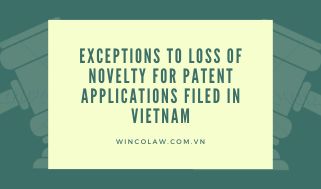On June 16, 2022, the lawmakers passed the amendments and supplements to the Law on Intellectual Property with 95.58% of votes in favour.
The revised law will start to take effect on January 1, 2023, except for the regulation on the protection of trademarks as sound signs that took effect from January 14, 2022, while the provisions for the protection of test data for agricultural chemicals will take effect from January 14, 2024.
This revised Law on Intellectual Property has a fairly wide scope, with 102 articles being amended and supplemented. The articles have been revised in a more apparent and more detailed way.
The most basic and important articles in the revised Law on Intellectual Property are reflected in seven major policy groups as follows:
Policy 1: Provide clear regulations on authors, copyright owners, performers, and related rights owners in cases of assignment or transfer of copyright and related rights. Namely:
— The regulations relating to the identification of property rights holders (owners, authors and performers) are further specified and clarified, helping to facilitate the transfer of ownership and use right in the contracts on assignment or transfer of copyright and related rights.
— The regulations on the grant of permission for the transfer of some moral rights by agreement (agreement on naming and modification of works) have been revised to suit the characteristics of copyright in order to solve problems that have arisen over the past time, such as those in cases when it is needed to change the names of works, to modify or upgrade computer programs.
Policy 2: Encourage the creation, exploitation and dissemination of inventions, industrial designs, layout designs and plant varieties generated from the state budget funds.
The revised Intellectual Property Law provides for the grant of the right to register inventions, industrial designs, layout designs or plant varieties created with the state budget funds automatically and without compensation to the organizations which directly manage the creation of these objects as prescribed in the law (and enjoy ownership in case of protection titles granted for these objects). At the same time, some new regulations allow the State can still exert control to maintain the effective exploitation and balance the interests of these organizations (protection title holders) and the interests of the State in the capacity as “the investor” and public interests.
Policy 3: Facilitate the process of carrying out procedures for registration of copyright and related rights and establishment of industrial property rights in the direction of simplicity, compactness, speediness, convenience and transparency
Some specific amendments include: creating a legal basis for organizations and individuals to register online for copyright and related rights; classifying third-party opinions to speed up the application examination process; simplifying the industrial design description; limiting security control on inventions; allowing delay of the publication of industrial designs; and adding a number of specific provisions on complaint settlement procedures in the field of industrial property.
Policy 4: Ensure an adequate and balanced protection level in intellectual property rights protection.
The amendments relate to all three areas of copyright/related rights, industrial property rights and rights to plant varieties, including:
— the addition of some exceptions that do not infringe the copyright or related rights, limitations of copyright and related rights in order to ensure the harmony of interests between copyright holders, work exploiters and users and the public enjoying access to the work;
— the addition of a number of regulations to control inventions using genetic resources and traditional knowledge about genetic resources;
— supplementing a number of grounds for invalidation or cancellation of protection titles;
— handling conflicts between trademarks and plant variety names as well as subjects of copyright and related rights;
— clarifying the conditions considered as unfair competition between domain names and pre-existing objects such as trademarks, trade names, geographical indications;
Policy 5: Raising the effectiveness of intellectual property support activities.
Some amendments aim to promote support activities for the intellectual property system (including representative and assessment activities). Namely:
Some regulations have been amended in a more open direction to create the competition in providing representation services (such as dividing representatives by field and loosening conditions for being granted industrial property representation practice certificates).
Some amended regulations on assessment are in the direction of clearly defining the scope between intellectual property assessment and judicial expertise and clarifying the evidence-based significance of intellectual property assessment conclusions.
Policy 6: Improve the effectiveness of intellectual property rights protection activities.
Regulations relating to rights protection have been revised to ensure an intellectual property rights protection mechanism more effectively, reasonably and feasibly. Notably, these regulations grant customs authorities the power to proactively apply control measures at the border if discovering clear grounds to suspect that imported or exported goods are fake in the course of inspection, supervision and control.
Policy 7: Ensure full and responsible implementation of international commitments of Vietnam on intellectual property protection in the global integration process.
Accordingly, there are a number of notable amendments and supplements that demonstrate the international commitments of Vietnam to intellectual property protection in the global integration process, such as:
— provisions relating to technological measures to protect rights and rights management information to ensure enforcement in the digital environment;
— the rights and responsibilities of enterprises providing intermediary services in the environment of the Internet and telecommunications networks;
— sound trademark protection;
— invalidation of the protection titles of marks
— the mechanism to ensure information for patent owners to exercise their rights in carrying out procedures for licensing the market circulation of pharmaceutical products;
— the obligation to protect confidential data in agrochemical license applications;
— the mechanisms to compensate patent owners for delays in licensing the market circulation of pharmaceutical products.





